Premium Only Content
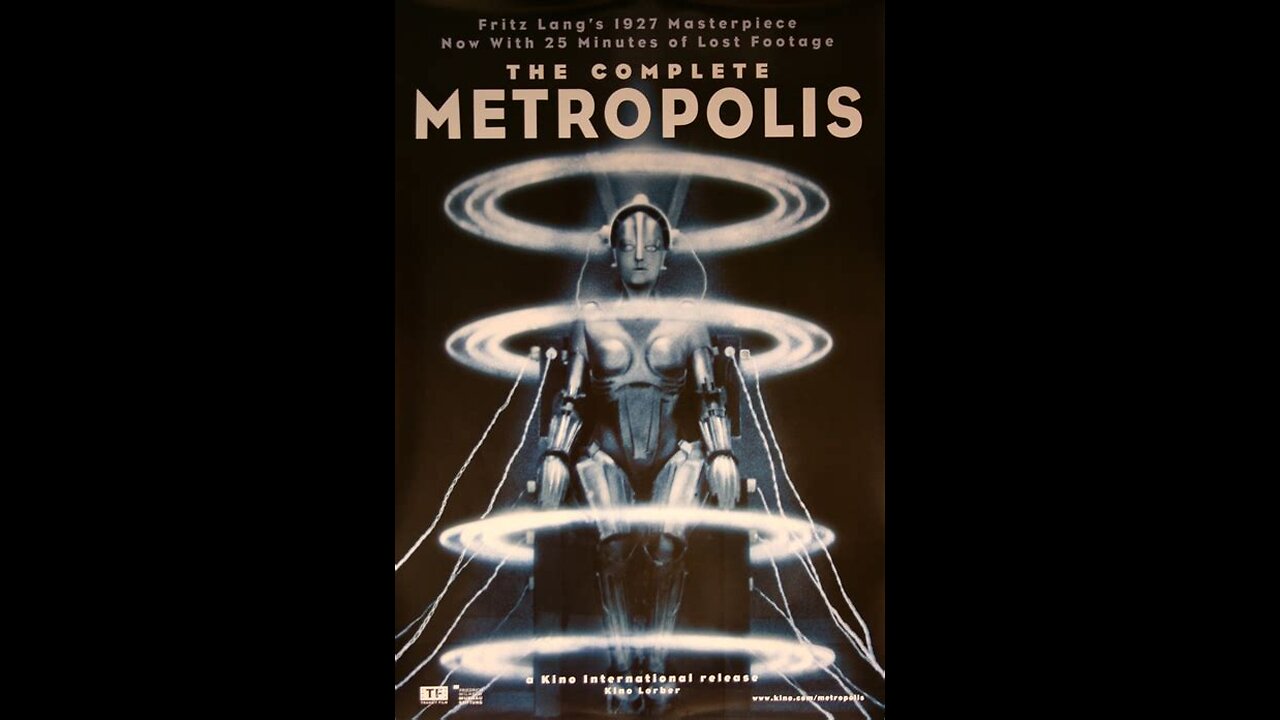
Metropolis Decoded: A Down-to-Earth Guide to the Movie’s Hidden Layers and Modern Meaning
(Unraveling the 1927 Classic for Today’s World)
Introduction: Why Metropolis Still Matters
At first glance, Metropolis (1927) can look like an ancient black-and-white curiosity—big city, silent-era melodrama, awkwardly intense acting. Yet beneath that vintage veneer, this film unveils a startlingly modern story of social imbalance, the perils of unchecked technology, and the quest for empathy in an industrial world. In other words, it’s bizarrely relevant in an age of AI, corporate mega-cities, and digital illusions. This “decode” aims to peel away the old-timey layers, clarifying what Metropolis is actually saying and why you, living in the 21st century, should care.
1. The Main Plot in Plain Language
1.1 Who’s Who
• Joh Fredersen: Think of him as the CEO or overlord of Metropolis, residing in a shining tower.
• Freder: Fredersen’s son, a carefree young man who accidentally discovers the underground workers toiling away under abysmal conditions.
• Maria: A hopeful, spiritual figure among the workers, preaching unity between the rich “thinkers” and poor “doers.”
• Rotwang: A mad scientist, harboring old grudges and messing with cutting-edge (for 1927) technology.
• Robot/False Maria: Rotwang’s mechanical double of Maria—charismatic but destructive, inciting chaos.
1.2 The Conflict
Freder’s father wants to maintain control over Metropolis. Maria wants the working class to get compassion. Rotwang, embittered, wants revenge and reanimates a humanoid machine to sabotage the city. Chaos ensues as the Machine-Man disguised as Maria stirs revolt, culminating in near destruction—water floods the workers’ city. The final scene reconciles the top (the “head”) and bottom (the “hands”) through the “heart,” bridging intellect, labor, and empathy.
2. Breaking Down the “Hidden Meanings”
2.1 Social Commentary: Class Divide
At the surface, Metropolis is a parable on extremes of wealth and poverty:
• High Above: The elites enjoy frivolous pleasures, disconnected from the labor that powers everything.
• Down Below: Workers face soul-killing shifts—feeding monstrous machines so city lights stay on for the upper class.
Modern Relevance: Consider how certain modern cities or industries mirror this dynamic, from corporate towers that rarely interface with the everyday people who keep infrastructure running. Gig economy drivers or warehouse workers can feel “underground,” fueling a shining digital economy for those “above.”
2.2 Technology Out of Control
Rotwang’s laboratory—where the robot is created—serves as a cautionary emblem: advanced tech can incite havoc if morality lags behind innovation. The robot transforms from a neutral tool into a manipulative figure that nearly destroys the city.
Modern Relevance: As AI and robotics advance, we face real-life questions about ethical oversight. Metropolis basically warns that ignoring these moral obligations invites chaos—just like letting a “false Maria” run amok stokes conflict rather than unity.
2.3 The “Heart” Motif
The head (the thinkers) + the hands (the workers) = meltdown without the mediator, “the heart.” That heartfelt dimension equates to empathy, human connection, or moral conscience. The film’s ultimate line says bridging reason and labor must happen through compassion.
Modern Relevance: As corporations expand and technology centralizes tasks, a purely profit-driven approach can breed resentment. We keep hearing about “corporate social responsibility” or “well-being at work.” Metropolis hammered home this concept a century ago.
3. The Special Effects That Look Like “Pre-Computer CGI”
You might wonder how they created futuristic skyscrapers, zipping cars, or the robot transformation in an age of silent film:
• Miniatures: Detailed scale models, shot to appear enormous.
• Layered Exposures & Mirrors: Pioneering illusions that visually merged sets and miniatures with live actors (the Schüfftan process).
• Elaborate Robot Design: The iconic “Machine-Man” was a handcrafted suit worn by an actress, with lighting tricks to simulate mechanical transformation.
Takeaway: This analog wizardry stands as an early forerunner of CGI illusions—achieved via creativity rather than computer code. It’s a testament to what “practical effects” can do if combined with imaginative direction.
4. Esoteric Hints: A Quick Overview
While the film can be enjoyed simply as an old sci-fi parable, it also hints at deeper layers:
• Mad Scientist Rotwang: Alchemical parallels—he manipulates “base matter” (the robot) to produce a living double, echoing classical golem myths or “homunculus” legends.
• Tower of Babel Scenes: Repeated references evoke biblical or spiritual warnings about overreaching, losing unity through overbuilt complexity.
• Maria as a Holy Figure: She preaches a spiritual re-awakening between classes, reminiscent of a saintly mediator urging love.
Again, for us, it can read as a symbolic caution that ignoring the intangible dimension (ethics, empathy, “heart”) in building advanced cities or technology can end in meltdown.
5. How It Relates to Today’s Issues
5.1 The AI Explosion
In Metropolis, the “Machine-Man” stirs trouble by impersonating a trusted human figure. Parallel it with modern “deepfakes” or advanced AI chatbots, which can mimic human interactions with ease. If society doesn’t manage these tools responsibly, they can stoke confusion or social unrest—like a high-tech false prophet.
5.2 Labor and Automation
The film imagines exhausted workers manning monstrous machines. We now see automation removing certain factory or warehouse roles altogether. Yet ironically, real “hands-on” tasks remain vital. The question remains: how do we ensure that technology liberates rather than enslaves laborers?
5.3 Surviving Endless Growth
Metropolis is an apex city built for seemingly unstoppable progress. Today, we champion “endless economic growth,” but simultaneously face ecological or social strain. Metropolis indirectly warns that unstoppable growth minus moral oversight can spark meltdown—in the film’s case, literal floods and riots.
6. Plainly Useful Lessons for the Average Person
1. Value Empathy at Work: If you’re a manager or an employee, don’t treat your environment as a machine you just keep feeding. People want recognition, not cold metrics.
2. Don’t Let Technology Dehumanize You: Tools are meant to augment life, not overshadow it. If some new app, AI, or gadget starts overshadowing your relationships, reconsider how it’s used.
3. Beware Charismatic Manipulators: “False Maria” teaches us to watch out for those (or that tech) that claims to unify but actually stirs anger or illusions. In social media or daily life, keep your eyes open for hype or divisive rhetoric.
4. Balance Mind, Body, Heart: Whether in your personal routines (head) or labor (hands), find the heart factor (compassion, sincerity) to keep it all in healthy synergy.
7. Final Thoughts: The Lived Relevance of Metropolis
Metropolis might appear as an archaic silent film, but its heartbeat resonates with modern complexities: social inequality, the unchecked rush of technology, and the unstoppable illusions that enthrall crowds. It’s no coincidence that nearly a century later, we’re grappling with “the next big tech revolution,” overshadowing typical worker concerns. The film’s “heart” message stays fresh—reminding us that no matter how sophisticated the “head” (the wealthy, the innovators) or how crucial the “hands” (the workers, the daily hustle), it’s empathy, compassion, and genuine moral leadership that can unify them in harmony.
Ultimately, you don’t have to become a silent film buff or adopt esoteric theories to glean something from Metropolis. The film, after all, underscores a common-sense principle: if we ignore human well-being amid big, shiny ambitions, meltdown’s around the corner. That’s a timeless heads-up. And if you do want something more mystical or symbolic, rest assured the layers are there—an intriguing swirl of illusions, alchemy, and social drama. Indeed, that’s the beauty of Metropolis: it can speak to you as a cautionary corporate allegory, a surreal spiritual parable, or simply a gorgeously bizarre spectacle. The choice—like the city’s fate—rests in your own hands and heart.
-
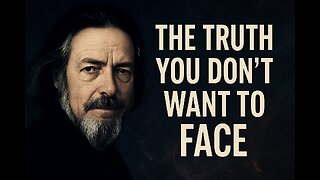 36:30
36:30
FragmentsOfTruth
11 days agoAlan Watts — The Truth You Don’t Want to Face | The End of the Search
4281 -
 LIVE
LIVE
freecastle
5 hours agoTAKE UP YOUR CROSS- For the Lord is a GOD of justice; BLESSED are all those who wait for him!
49 watching -
 2:10:12
2:10:12
Side Scrollers Podcast
6 hours agoMAJOR Hasan Allegations + Arc Raiders Review CONTROVERSY + Craig TRENDS on X + More | Side Scrollers
32.2K6 -
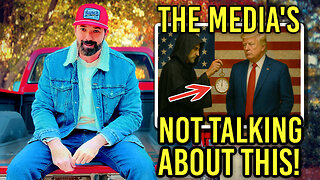 5:43
5:43
Buddy Brown
5 hours ago $4.90 earnedThere's a List of WEF's "Post Trump" Predictions GOING VIRAL! | Buddy Brown
22.8K15 -
 LIVE
LIVE
The HotSeat With Todd Spears
2 hours agoEP 207: Have YOU earned THEIR Sacrifice??
512 watching -
![[Ep 789] Republicans Turn “Clean CR” Into Hemp Ban | 50 Year Mortgage: Game Changer](https://1a-1791.com/video/fwe2/ce/s8/1/E/2/P/y/E2Pyz.0kob-small-Ep-789-Republicans-Turn-Cle.jpg) LIVE
LIVE
The Nunn Report - w/ Dan Nunn
2 hours ago[Ep 789] Republicans Turn “Clean CR” Into Hemp Ban | 50 Year Mortgage: Game Changer
158 watching -
 12:56
12:56
Benjamin Sahlstrom
7 hours agoTesla Powerwall 3 vs Anker SOLIX X1
2.35K -
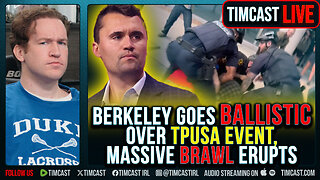 1:02:24
1:02:24
Timcast
5 hours agoBerkeley Goes BALLISTIC Over TPUSA Event, Massive BRAWL ERUPTS
174K141 -
 LIVE
LIVE
StoneMountain64
4 hours agoBattlefield REDSEC $100k TOURNAMENT
96 watching -
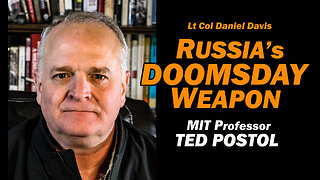 57:04
57:04
Daniel Davis Deep Dive
8 hours agoRussia's Doomsday Weapon /MIT Prof. Ted Postol
24.4K6